One of the partner events of the STRP festival in Eindhoven (reports coming this way soon-ish) is the Funware show, open until mid January at one of my favourite art centers in Europe, MU. Exhibition after exhibition, the art space gives a generous overview of what contemporary creativity means by showcasing indiscriminately design, fashion, music, architecture, and new media.
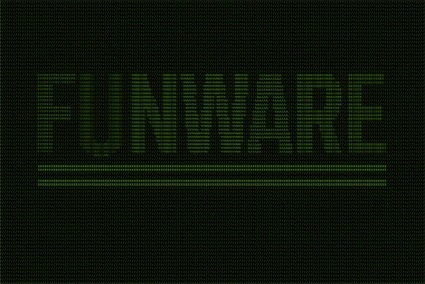
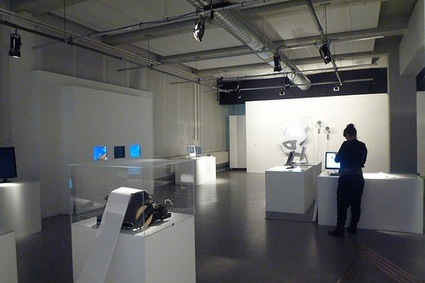
Some people might believe that software is a thing of austerity, tedium, abstruseness and long nights sustained with cup noodles. Funware demonstrates with an array of interactive installations, games, hacks and rebellious applications that developing, twitching and using software can be fun. In fact, while visiting the show, you could almost forget that software is at the core of the works.
However improbable it might sound for today’s all encompassing dullness of forms, databases, schedules and processors, “fun” has informed and guided the development of software from its very inception. The rise of net art and the changes the Internet and desktop computers brought to culture gave rise to software art at the turn of the millennia.
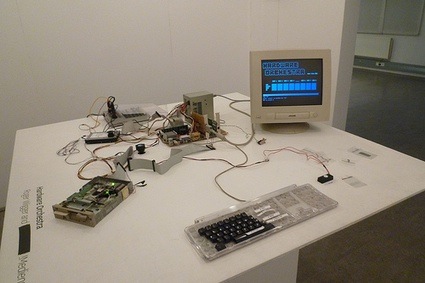 Roger Wigger and !Mediengruppe Bitnik, Hardware Orchestra
Roger Wigger and !Mediengruppe Bitnik, Hardware Orchestra
The exhibition aims to make such an ‘obscure’ technological object as software, open, palpable and approachable, bridging a gap between ‘serious’ production such as technology and ‘non-serious’ production such as different forms of art.
Discretionary selection of the goods on show:
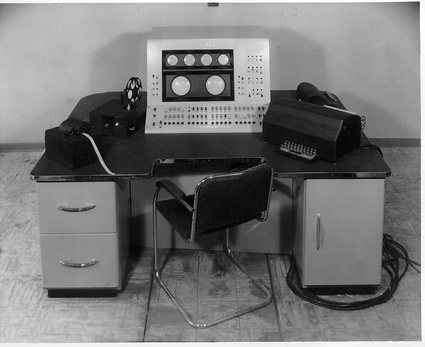
In 1952, one of the first programmers, Christopher Strachey, who was working with Alan Turing at Manchester University, created the first text-generating algorithms: a Mark I program that delivered combinatory love letters. LoveLetters Redux, by David Link, is a functional replica of the Ferranti Mark I. If the visitor employs the right switches of the reconstructed user interface console, it executes the original code of Strachey’s software. A loveletter is then created and projected on the other side of the wall.
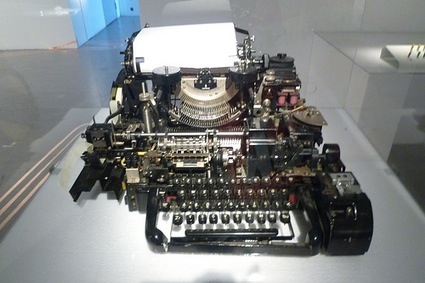
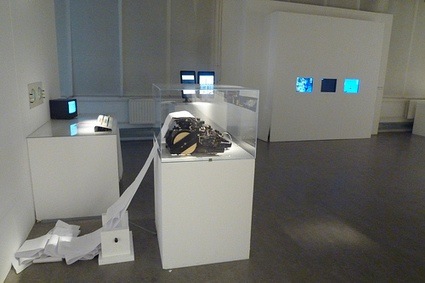
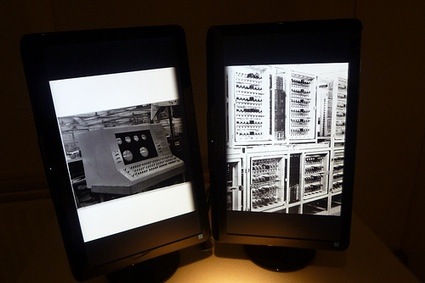
Link worked from just two archival photographs to reconstruct the machinery LoveLetters_1.0 is modeled on. He also managed to source some of the original working components, like the 1931 teleprinter shown in the exhibition space. Once a day, at a randomly selected moment, the machine automatically prints a love letter on the Creed 7 teleprinter.
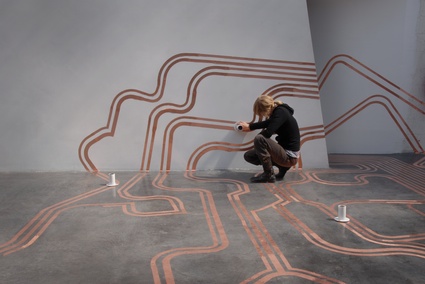
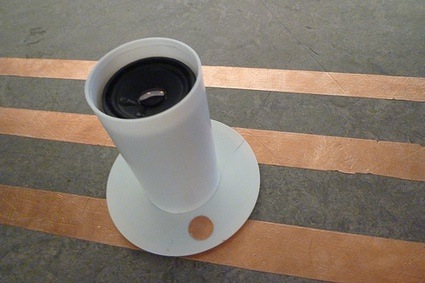 OSK – Offener Schaltkreis (open circuit), by Christoph Haag, Martin Rumori, Franziska Windisch and Ludwig Zeller, is a silent labyrinth made of open copper tracks that turns into a giant noisy machine as visitors place speaker cylinders on its tracks. The open copper trails -similar to the ones you’d find should you open the insides of a computer- that snake on the floor and walls carry the electrical signals of a multichannel sound repository. Displacing the speaker-cylinders increases the speed, pitch and velocity of the repository of sounds recorded by the artists in Eindhoven.
OSK – Offener Schaltkreis (open circuit), by Christoph Haag, Martin Rumori, Franziska Windisch and Ludwig Zeller, is a silent labyrinth made of open copper tracks that turns into a giant noisy machine as visitors place speaker cylinders on its tracks. The open copper trails -similar to the ones you’d find should you open the insides of a computer- that snake on the floor and walls carry the electrical signals of a multichannel sound repository. Displacing the speaker-cylinders increases the speed, pitch and velocity of the repository of sounds recorded by the artists in Eindhoven.
SimCopter Hack, by RTMark, is a legendary prank played on SimCopter, a computer game that put the player in the role of a helicopter pilot flying through 3D cities.
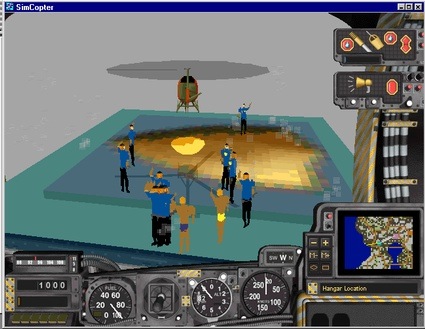 RTMark, SimCopter Hack, 1996
RTMark, SimCopter Hack, 1996
While he was working as a programmer for Maxis Inc., a RTMark member slipped into the game a few ‘unauthorised images’ of semi-dressed men walking around in trunks and kissing each other (bringing thus some variety from the usual ‘buxom babes’), a couple of Elvis impersonators, the Loch Ness monster and a flying superhero. The feature would be activated and become visible on Friday the 13th, as well as on a few other days of the year – a classic Easter Egg snuck into over 70,000 copies of the game shipped to customers.
The designer was fired and the release of the game was delayed. A few months later, a group named RTMark claimed responsibility for the himbos (male bimbos) being inserted into the game along with 16 other acts of “creative subversion.”
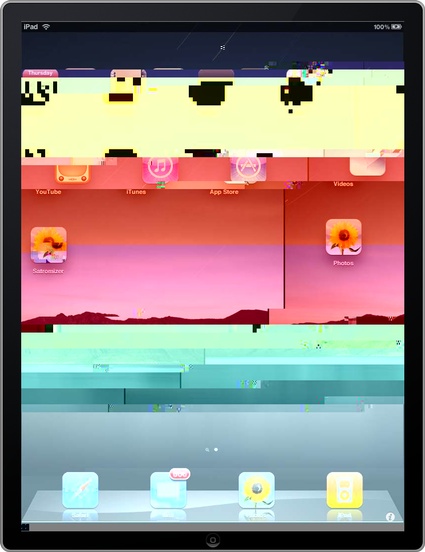 Satromizer aka “the world’s first multi-touch glitch tool”, by Jon Satrom and Ben Syverson, is an application for iPhone, iPod and iPad that reconciles the glitch culture of the 1980s and 1990s with the spic-and-span aesthetics and closed interface of Apple products: glitches grow and the interface falls apart as you touch the screen.
Satromizer aka “the world’s first multi-touch glitch tool”, by Jon Satrom and Ben Syverson, is an application for iPhone, iPod and iPad that reconciles the glitch culture of the 1980s and 1990s with the spic-and-span aesthetics and closed interface of Apple products: glitches grow and the interface falls apart as you touch the screen.
Satromizer also reflects on the role that software art can play in destabilising the ‘boredom’ of software.
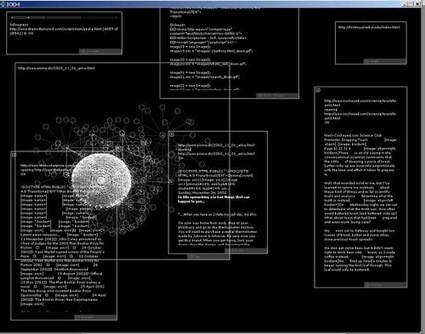 I/O/D, WebStalker, 1998 (image)
I/O/D, WebStalker, 1998 (image)
I/O/D/ 4: The Web Stalker, by I/O/D.((Matthew Fuller, Colin Green and Simon Pope)), is a software application that re-visualises data-space. It allows web users to navigate WWW, except that all the information displayed is exactly what a normal browser conceals: a stream of html code, the progress of connection, maps of the links from the website, relations between the URLs within it and automatic records of the site. The aesthetics is extremely appealing with hyperlinks that appears as graphics. I/O/D challenges our usual notion of interactivity’ and questions the material and structure of the network.
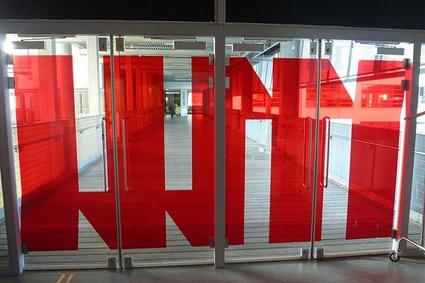
Funware was curated by Olga Goriunova, Senior Lecturer in Media Practices at London Metropolitan University. Rhizome recently interviewed her.
A few images.
Funware is open until January 16, 2011 at MU in Eindhoven. The exhibition will travel to Hartware MedienKunstVerein in Dortmund, DE, in 2011.

